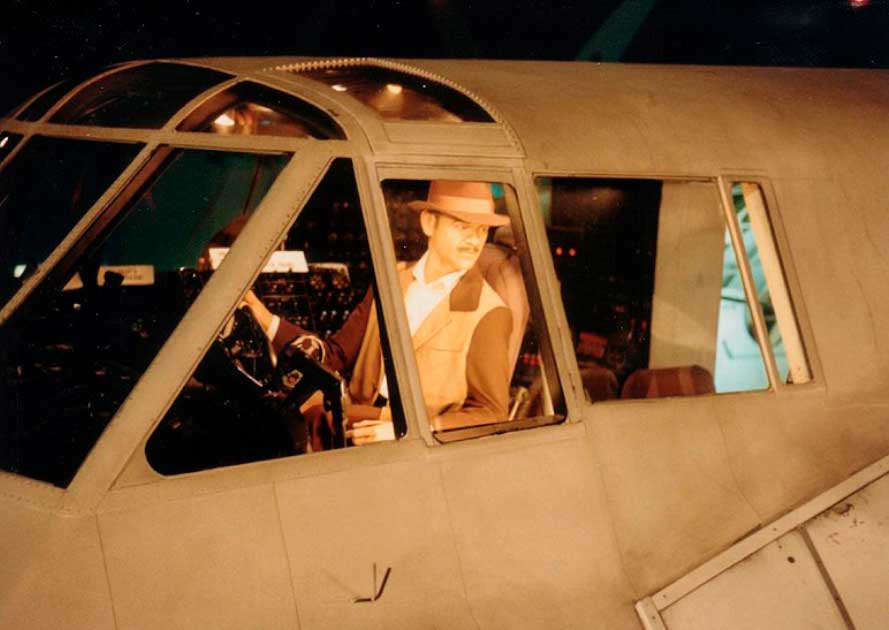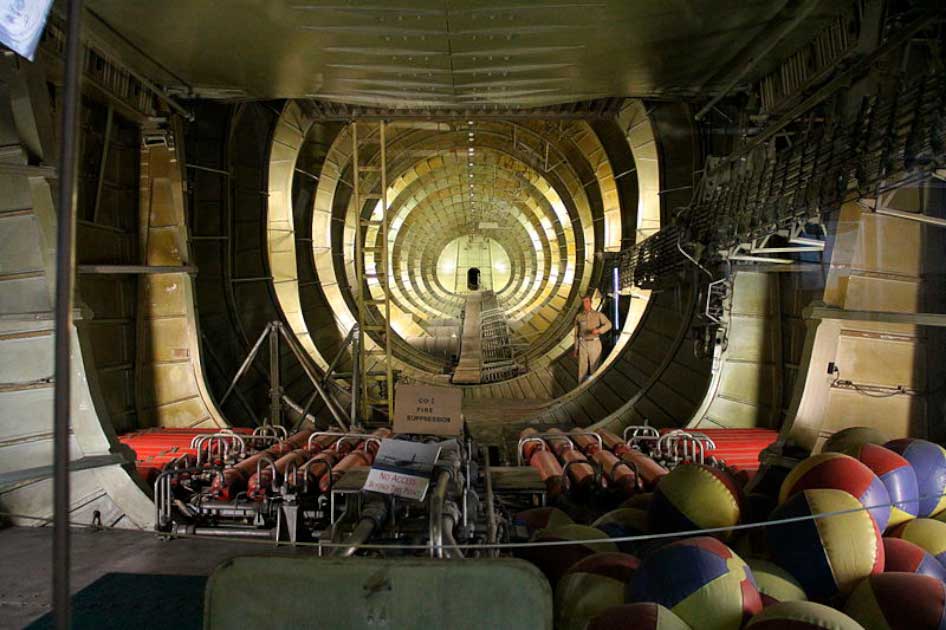The Hughes H-4 Hercules, which is also commonly called the Spruce Goose, was the world’s largest airplane at the time of its construction. The brainchild of Howard Hughes, the aviator, it was exactly what he thought he US military needed at the time.
However, its single flight and the timing of its creation, which brought a halt to plans of use in the war, make for an interesting history. In 2022, the plane celebrated its 75th anniversary of its maiden flight, only to never take to the skies again.
The wooden seaplane with the largest wingspan was also known as a flying boat. Today, the machine meant for World War II is today housed in the Evergreen Aviation & Space Museum. This museum, situated in Oregon, holds the Spruce Goose so dear that the museum building was built around it.
This also gives you an idea of how big the Spruce Goose is in its dimensions. How did Hughes get such an enormous plane to fly at all in the 1940s?
What’s in a Name?
The Spruce Goose was conceptualized during World War II when the need for supplies in England was critical to the war effort, and Allied Ships were largely sunk by German U-boat attacks. The concept of the giant seaplane came from a man named Henry Kaiser in 1942.
The giant seaplane would have been used to ship men, ammunition and supplies to England in a short amount of time. The shipbuilder took the help of aircraft designer Howard Hughes, and the two tried to design the seaplane.

Since World War II was at its peak and metals and alloys were seen as strategic materials for the war, these materials were not available openly for research projects. Thus, the two men tried to develop the seaplane from wood.
The two engineers used a mixture of birch and resin, which created a composite called Duramold. The Duramold composite was used to design the seaplane, and then all the parts were laminated together.
- The Largest Aircraft in WW2: What happened to the “Gigant”?
- The “Killer” Swallow: Did the De Havilland Jet Break the Sound Barrier First?
The aircraft had the initial name of HK 1, but when Henry Kaiser dropped out of the project due to construction delays, the giant seaplane was renamed the H-4 Hercules aircraft. The H-4 Hercules aircraft was completed too close to the end of the war after Kaiser dropped the project in 1944. The aircraft was only completed in 1946, and by that point it was no longer needed.
The Spruce Goose project was deemed to be very expensive, with an expenditure of $23 million at that time. The estimation of the expenditure in 2022 would have been $352 million. Seeing that the Spruce Goose took only one flight, the investment is seen as a waste apart from the fact that it is a historical plane with a unique design.
The name Spruce Goose was given by people who criticized the design and functions of the plane. Howard himself disliked the nickname because he did not like the engineering marvel to be called the Spruce Goose.
Since the plane was made of spruce wood, it made a certain amount of sense. On the other hand, once the crew of the plane started referring to the plane as the “birch bitch”, Hughes went for the Spruce Goose name instead.
A Testbed or a Functional Aircraft?
The size of the airplane and its design raised eyebrows. Since the airplane also had construction delays and was finished after the war, the investors of the project were skeptical about the plane.
The increased cost of its completion also pushed lawmakers and investors to ask the question if the plane could actually fly. So, the first tests that happened on the seaplane were the taxi tests, before more ambitious maneuvers were attempted.
The tests were conducted on November 2, 1947. The flying of the Spruce Goose was a big event, with journalists and dozens of watchers gathered to see the maiden flight of the seaplane. Howard Hughes himself took control of the H 4 and took it out of the hangar at Long Beach. The plane itself carried many journalists and crew members in it when it took flight.
At first, Hughes took two taxi passes on the water at less than its lift-off speed. The next time he accelerated the plane beyond its lift-off speed to start the flight. The giant plane, weighing two hundred tonnes, flew for 30 seconds at 70 feet (21 m) altitude for a distance of one mile (1.6 km).
- The Kugelpanzer: Why Did the Nazis Build a Spherical Tank?
- The Hewitt-Sperry Automatic Airplane: The First Cruise Missile?
The short flight was questioned, and journalists asked Howard if the 30-second flight was intentional. Hughes maintained that he had intended to take off, but there was no doubting the plane could fly.
Despite its flight, which was deemed successful to an extent, it was never sent into mass production. Why the H-4 was never mass-produced might be because of the material needed and the expense. Howard Hughes then shifted the Spruce Goose to a climate-controlled hangar and kept it away from the public.

However, for the rest of his life, Howard Hughes kept the plane at flight ready status, able to take off with just a phone call. The Spruce Goose proved to be an expensive property as its annual maintenance costs were $1 million.
Hughes even maintained the crew of the plane and gave them salaries to look after the plane’s functions. People spent their days looking after a plane that never left the ground again.
Preservation and Restoration
After Howard died in 1976, the plane was supposed to be dismantled. The lease of the hangar expired, and there was no place to keep the Spruce Goose. The Summa corporation wanted to divide up the plane’s components and send them to different museums for aircraft.
The Aero Club of South Carolina and the Wrather Corporation had other plans for Spruce Goose. In the 1980s, the Spruce Goose was sold to the Disney Corporation.
In 1992, the proposal was to give Spruce Goose a permanent home at the Evergreen Air & Space Museum. The proposal was submitted by the Smith family, and the plane was protected in the Aviation Museum built around it.
Today, the Spruce Goose is the centerpiece of the Evergreen Aviation Museum located in McMinnville. Today, the museum holds more than 107 aircraft apart from the Spruce Goose, but there is no question what the main attraction is.
Top Image: A magnificent machine: the Hughes H-4 Hercules, better known as the Spruce Goose. Source: US Government / Public Domain.
By Kurt Readman